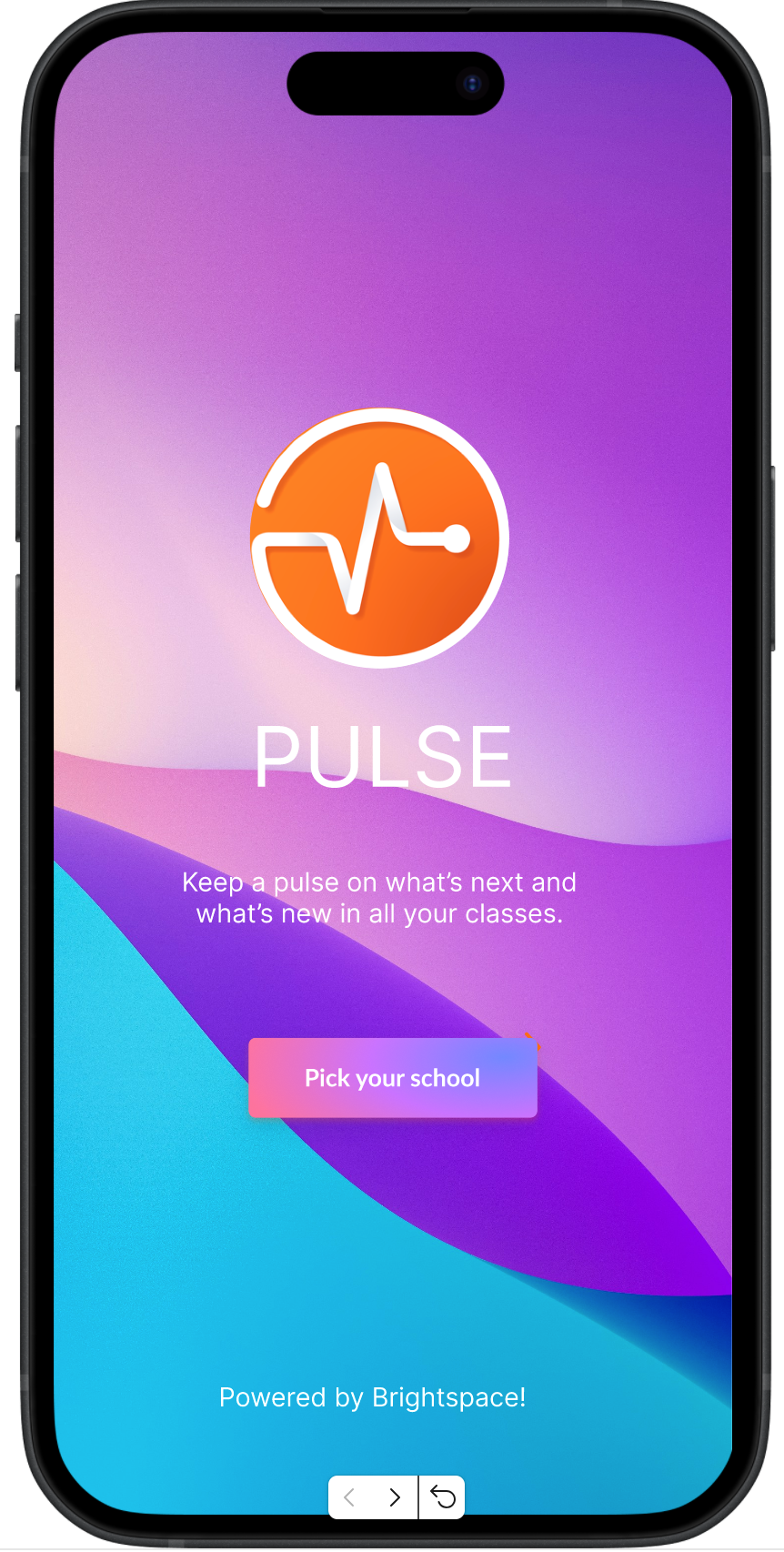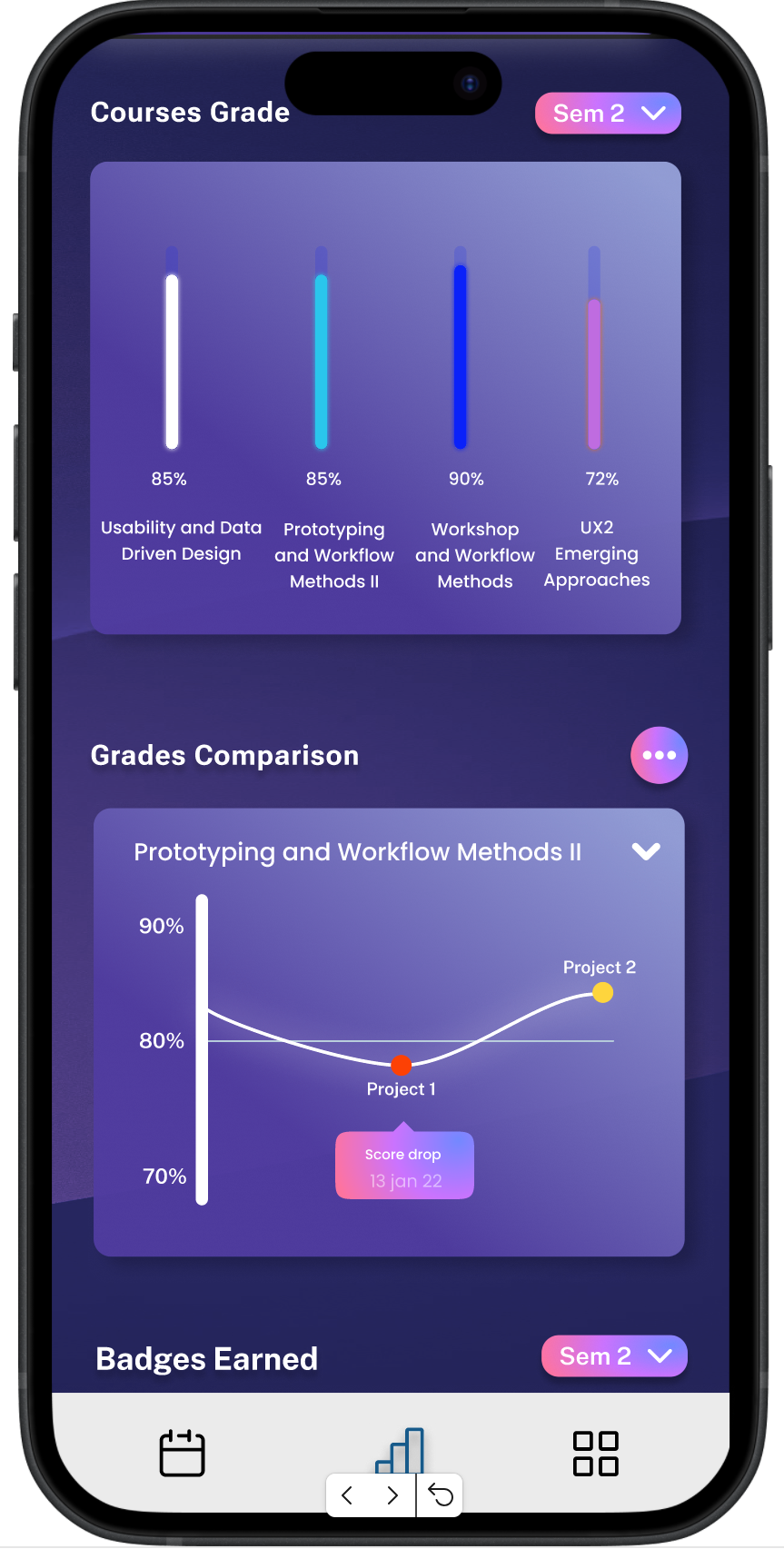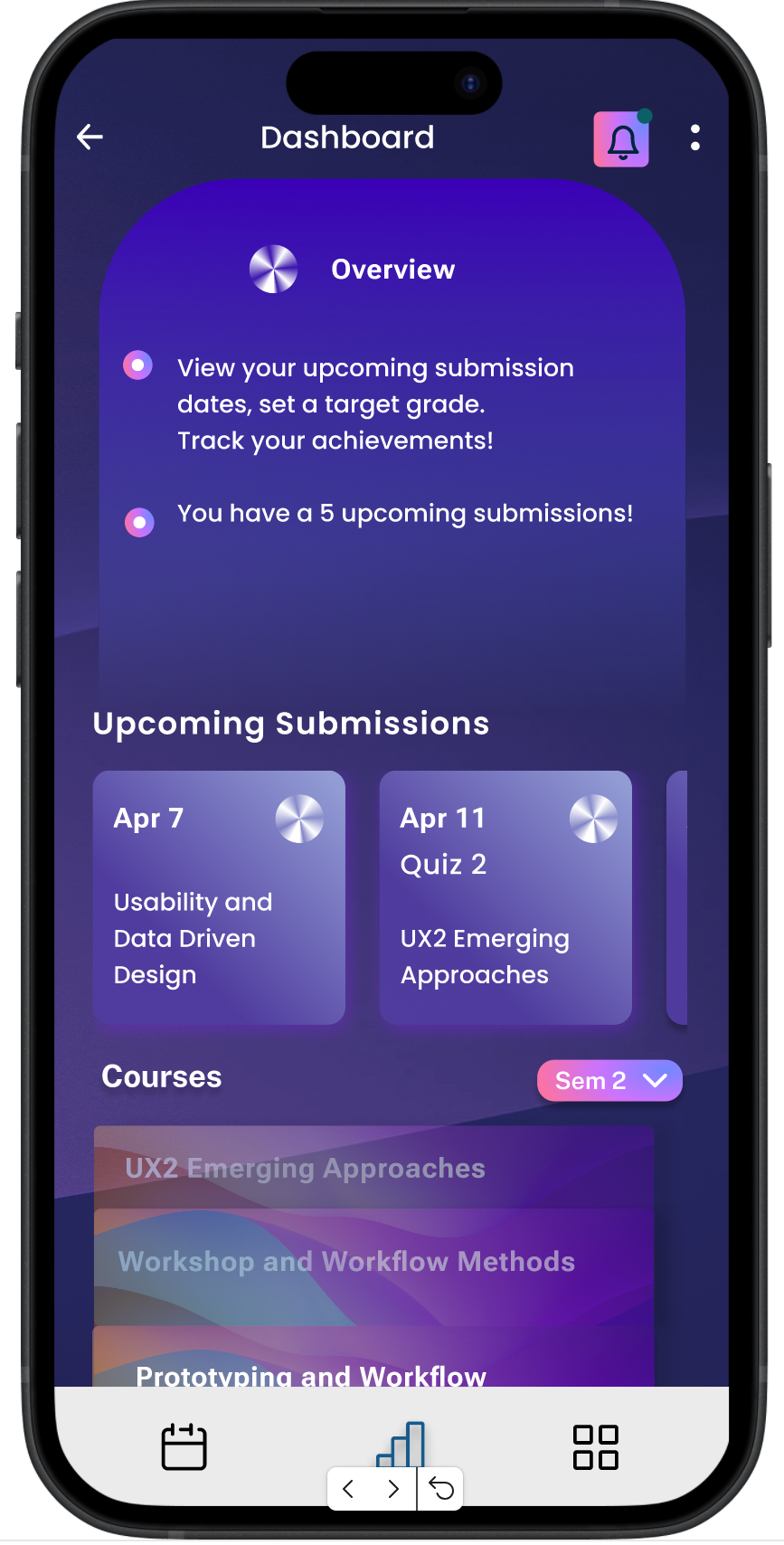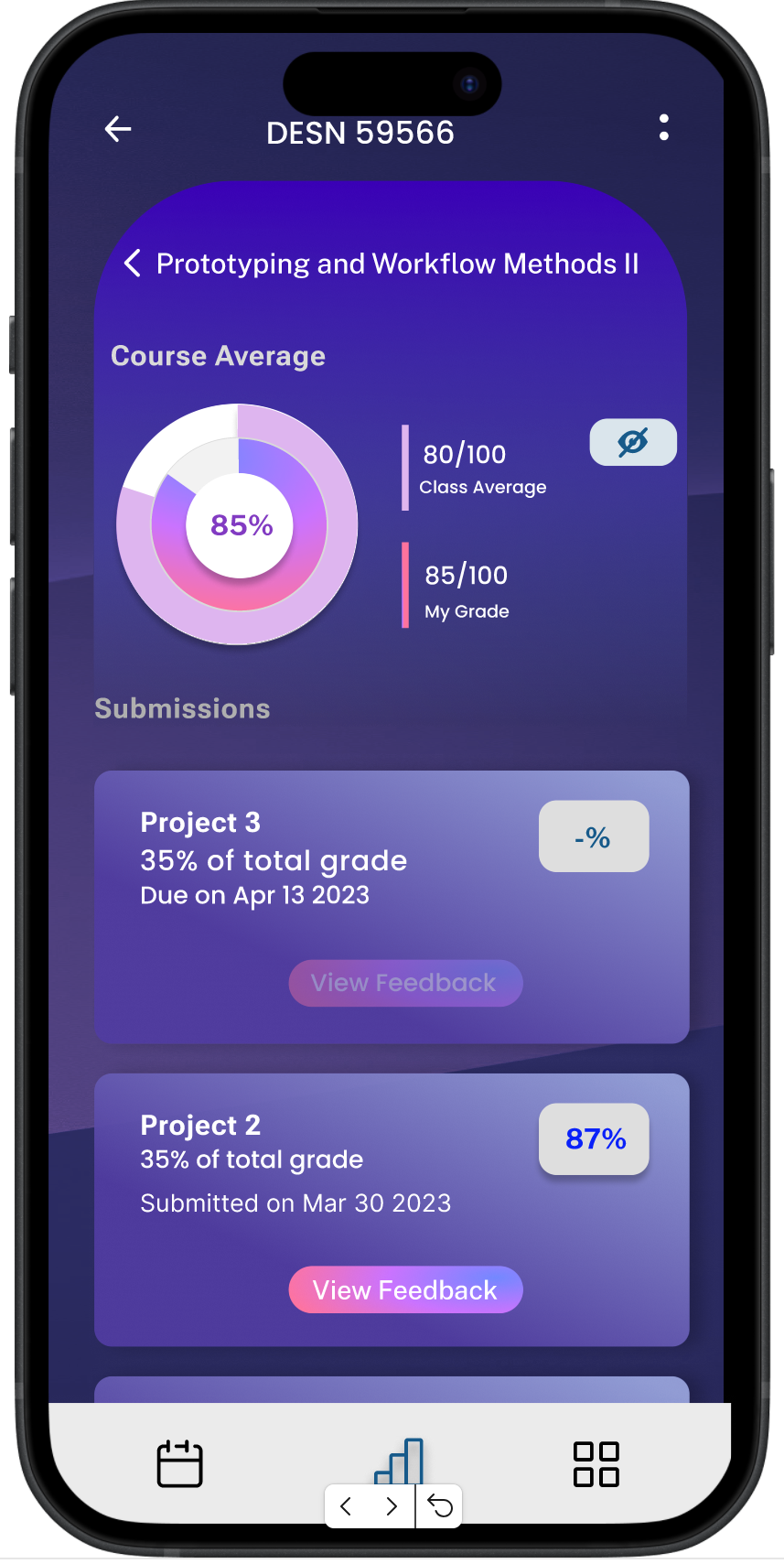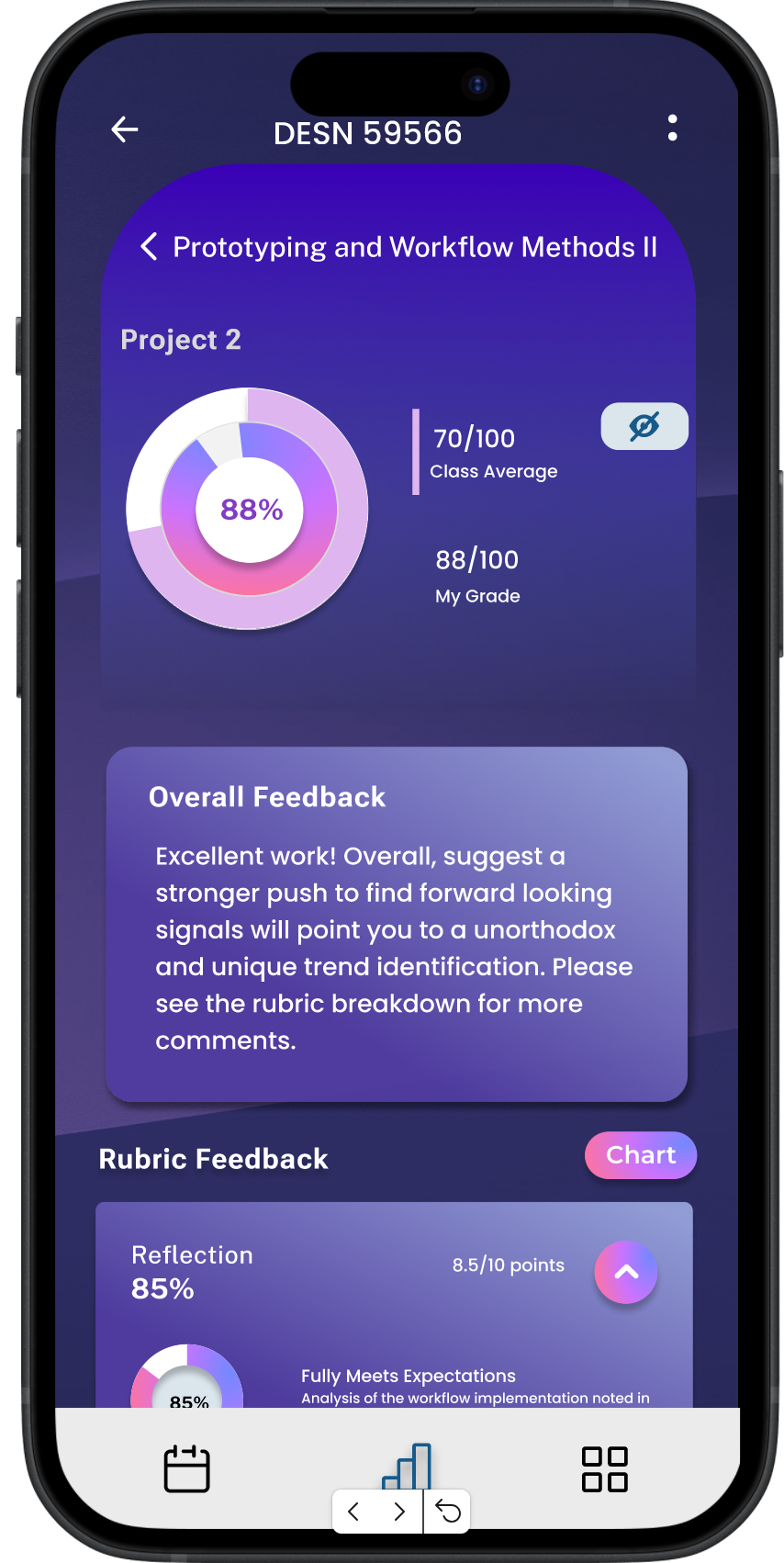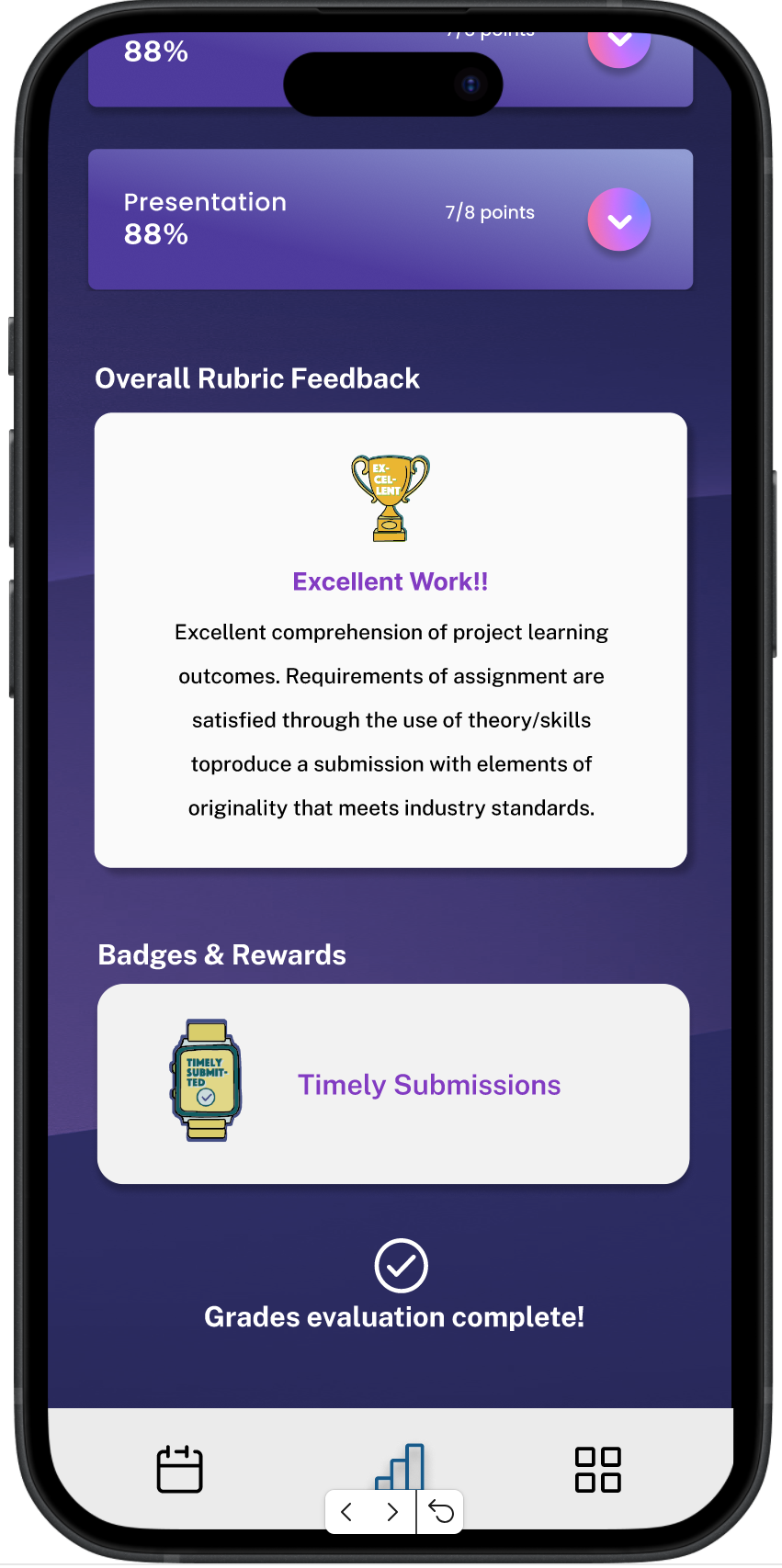Pule App by BrightSpace
The Problem Statement
The grading system in the PULSE app is challenging for students. Challenges involve viewing and comparing grades, receiving feedback, and tracking academic performance.
My Role
- User Research
- Interaction, Visual Design,
- Prototyping & Testing, Pitching
Duration-05 Jan - 20th Apr 2023
Tools Used
Live Pulse App
A grading management system that helps student manage their grades by setting target grades and understanding how they and achieve the target grade. Students received constructive individual feedback for all grades received each semester. Students were rewarded for their achievements for motivation leading to academic growth efficiently.
Pulse Live demonstrates how the re-design of pulse app grade management functions. Don't forget to check out the prototype!
Features
Legacy Experience
Here is our initial student experience with some major pain points. We figured out a need for simpler navigation, an efficient performance tracking mechanism, a feedback system to keep the users informed, and a user-friendly dashboard experience.
Problem 1
Users were frequently logged out and forced into a two-step login process. This disrupted their flow and created unnecessary friction every time they tried to re-enter the app.
The repeated interruptions caused frustration and reduced trust in the platform. Many users abandoned tasks midway, leading to lower engagement and overall dissatisfaction with the app experience.
Opportunity
Streamline the login process by reducing redundant steps, introducing single sign-on (SSO) or persistent sessions, and ensuring smooth re-entry. This would lower friction, improve continuity, and encourage users to stay engaged.
Problem 2
Students could see their grades but had little clarity on how those grades translated to overall academic standing or future success. The app lacked visibility into how far they were from achieving their goals and what concrete actions (time, effort, study strategies) were needed to close the gap.
I leveraged the goal gradient effect — the principle that people are more motivated as they perceive themselves getting closer to a goal — to make students feel a sense of continuous progress in the app.
Progress Visualization: Instead of only showing static grades, I designed clear progress bars and milestones that made students see exactly how far they had come and how close they were to their academic targets.
Actionable Steps: I broke larger academic goals into smaller, achievable tasks (e.g., completing assignments, study hours). This gave users a sense of frequent wins, keeping motivation high.
Feedback Loops: Each completed task updated its progress in real-time, reinforcing the feeling of forward momentum and reducing uncertainty about “what’s next.”
Outcome: Students reported feeling more in control and motivated, as they could track incremental achievements and clearly understand the gap to their goals.
Pain Point
Solution
Unavailability of Graded Rubric and Feedback
Graded Rubric with detailed feedback within the app
Without Comprehensive feedback and a graded rubric, it becomes challenging to gauge one's performance accurately, leading to a lack of self-awareness
A graded rubric is designed that specifically provides a structured framework for evaluating performance based on specific criteria
Graded Rubric
Pain Point
Solution
Lack of Motivational Features
Without features that celebrate and highlight students' performances, there is a missed opportunity to reward their hard work and accomplishments
Introducing badges as a means of motivation for students to recognize and celebrate students' exceptional skills, even if their grades may not reflect their full potential.
Low Fidelity Prototypes
Iteration 1
Iteration 2
Mid-Fidelity Wireframes
High Fidelity Prototypes
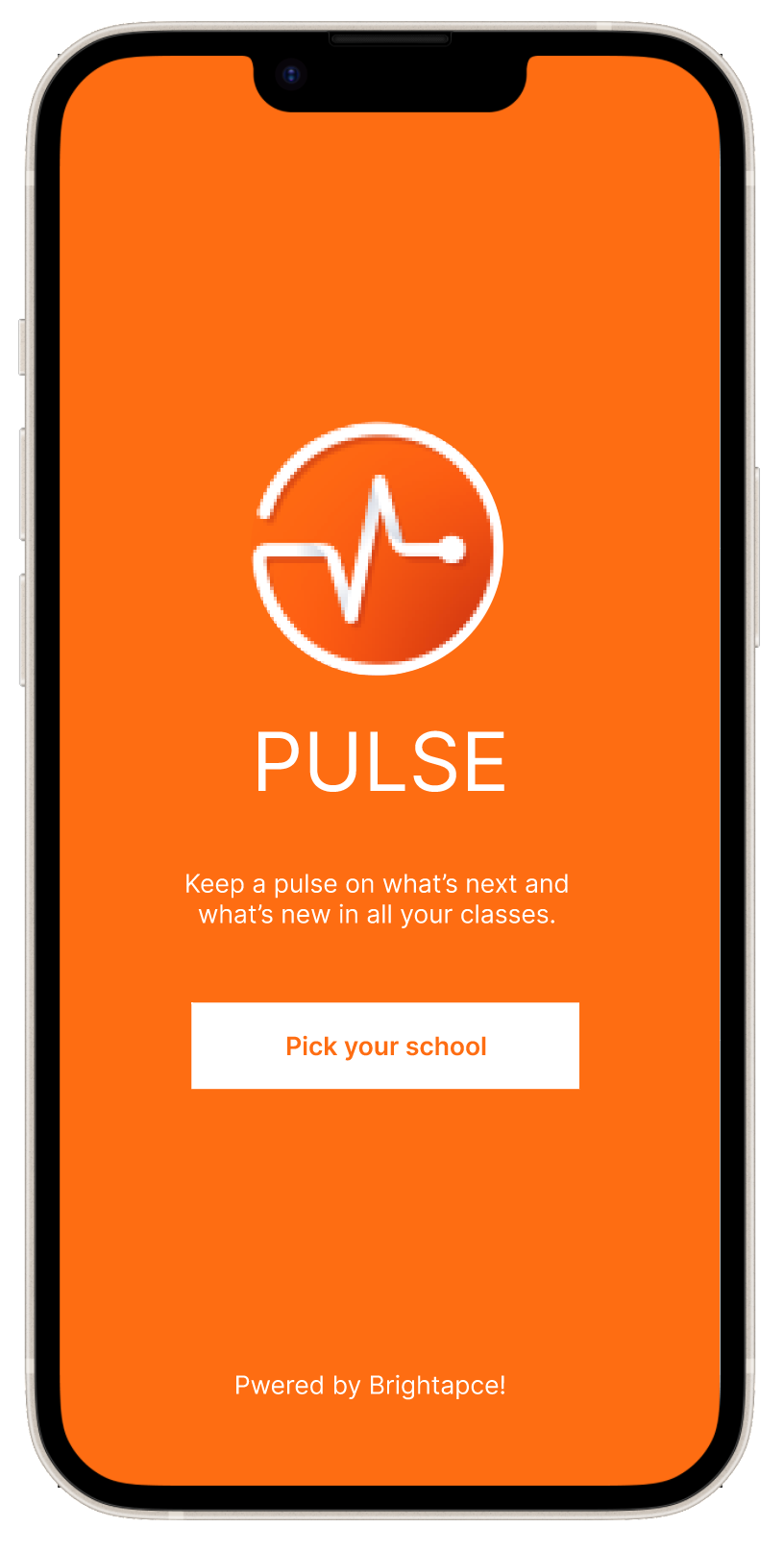
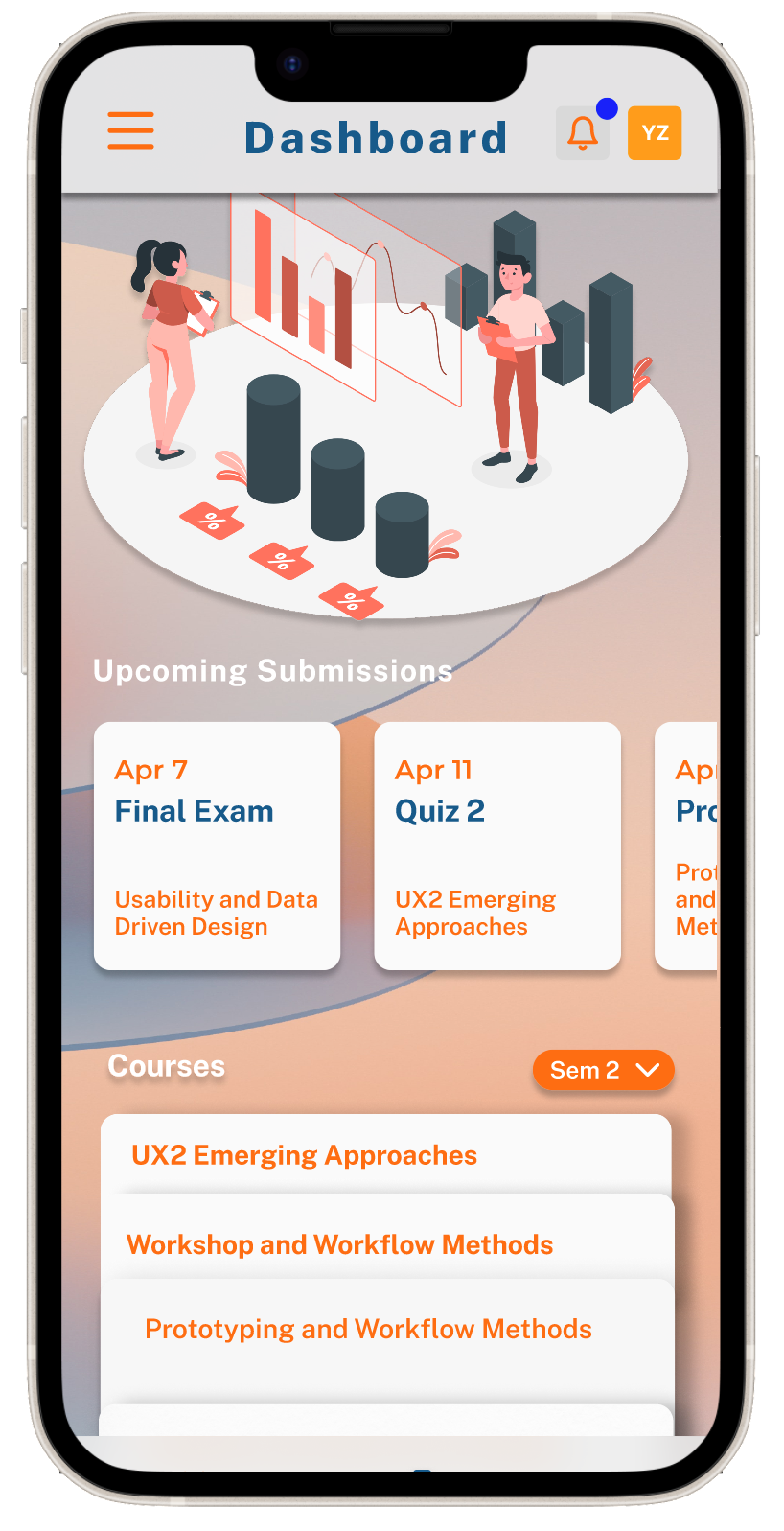
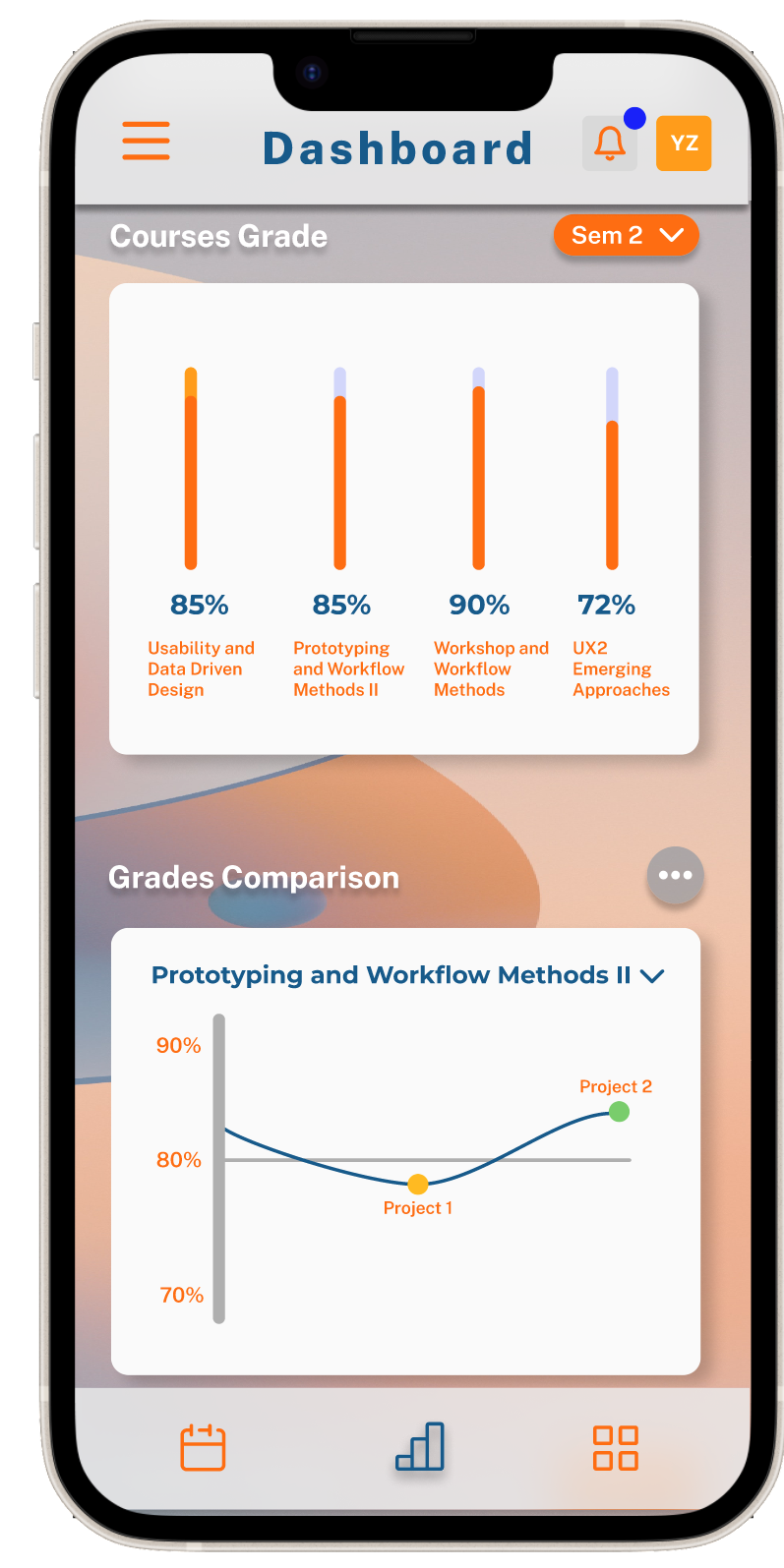
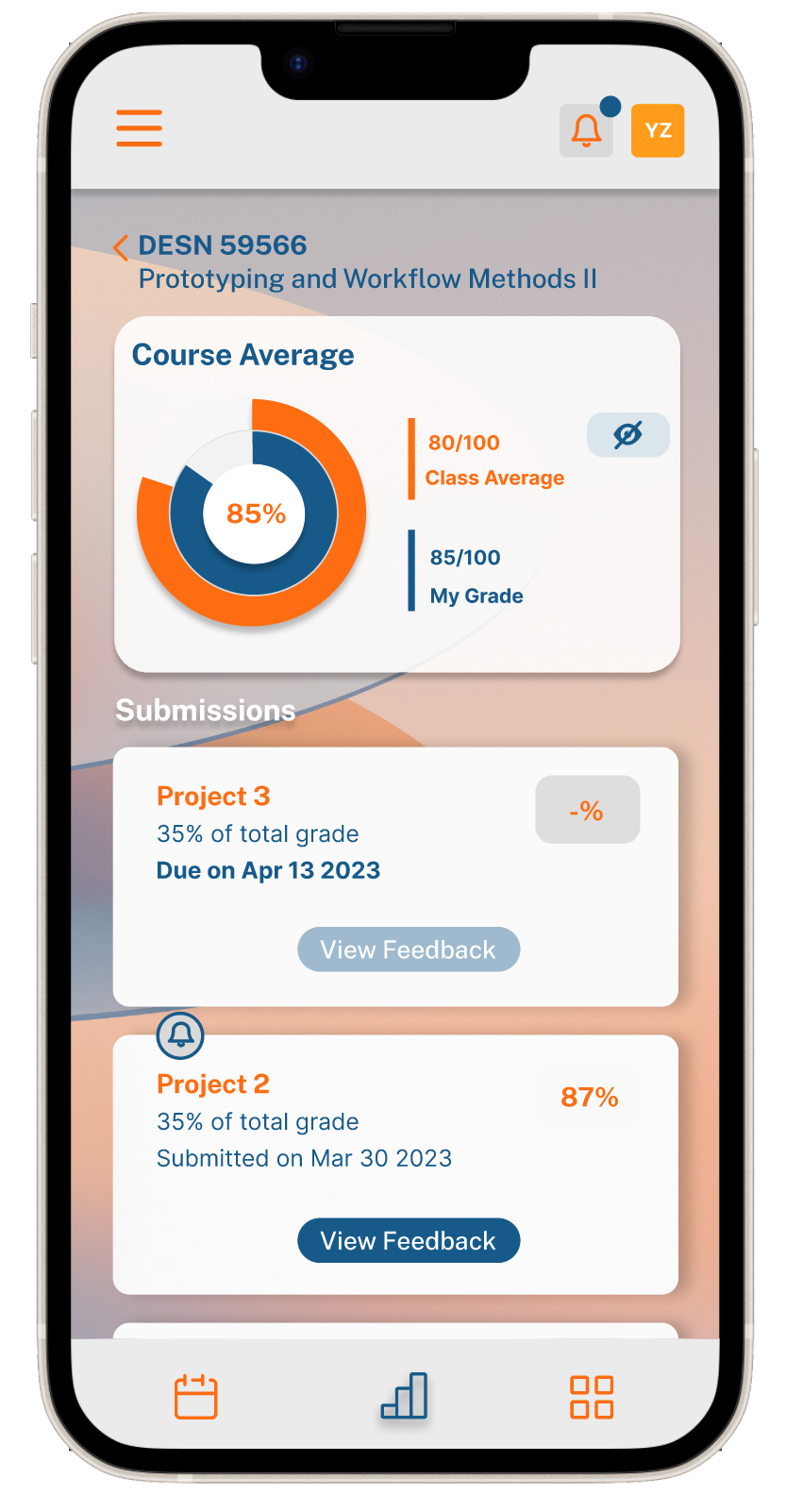
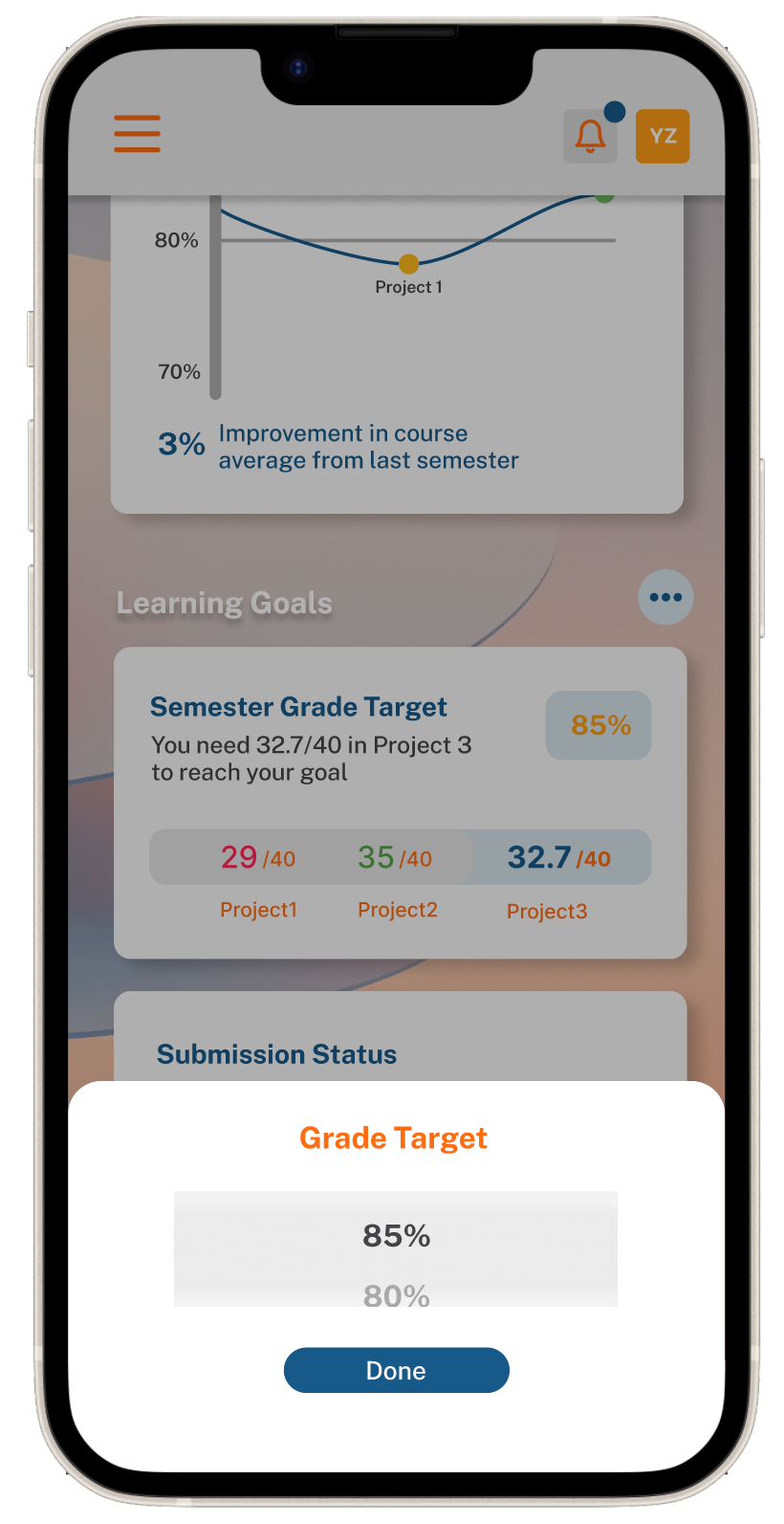
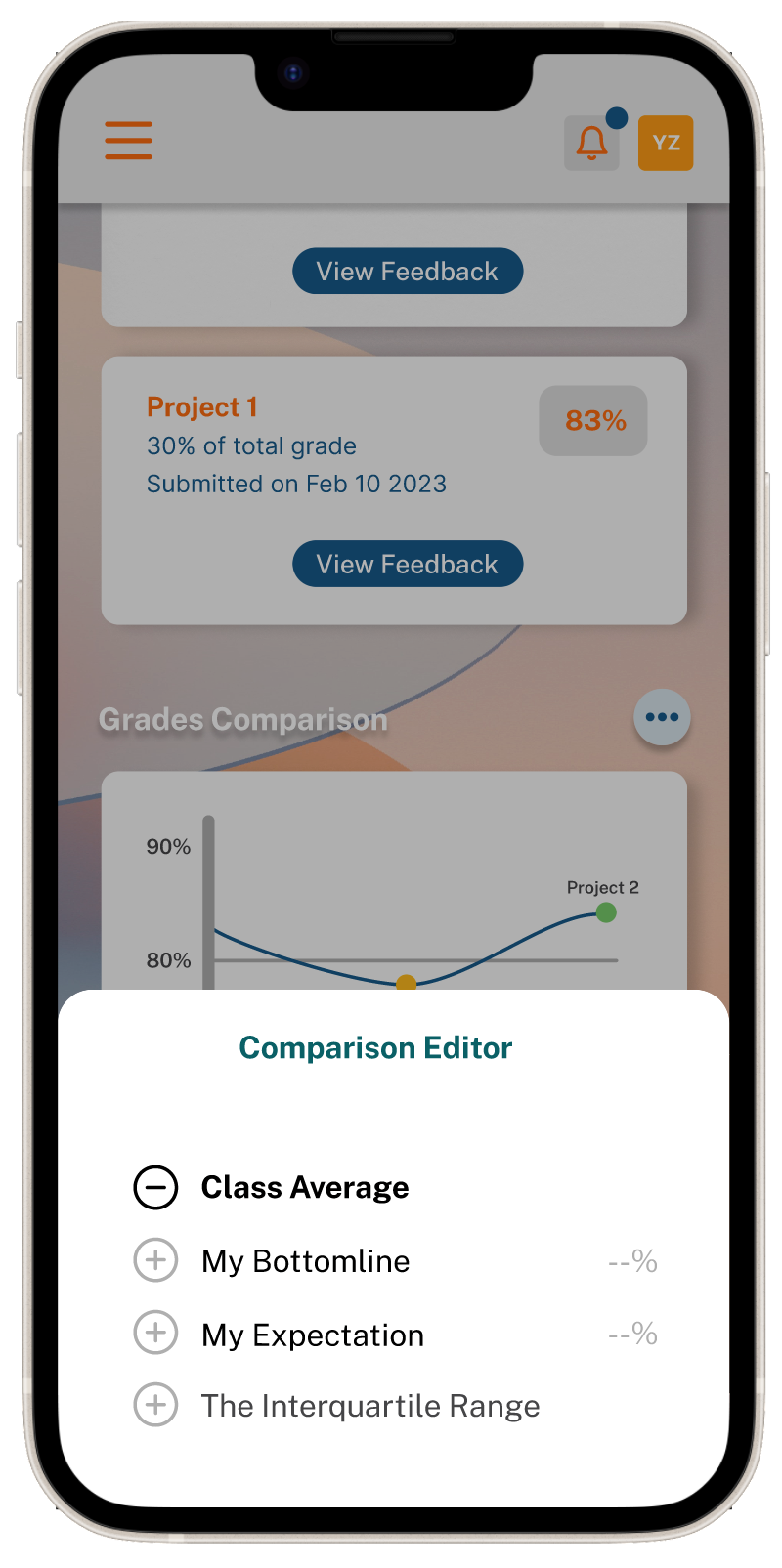
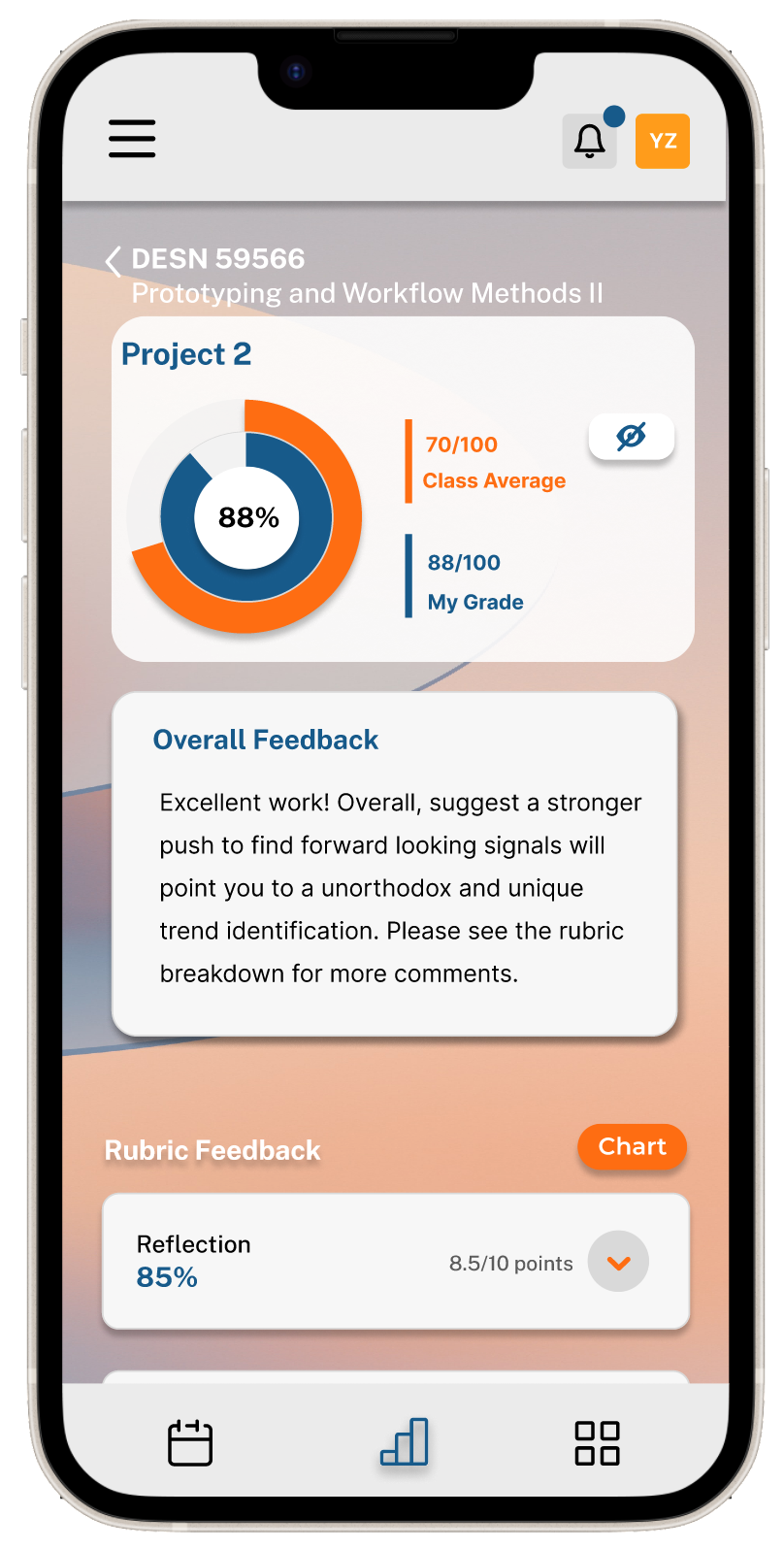
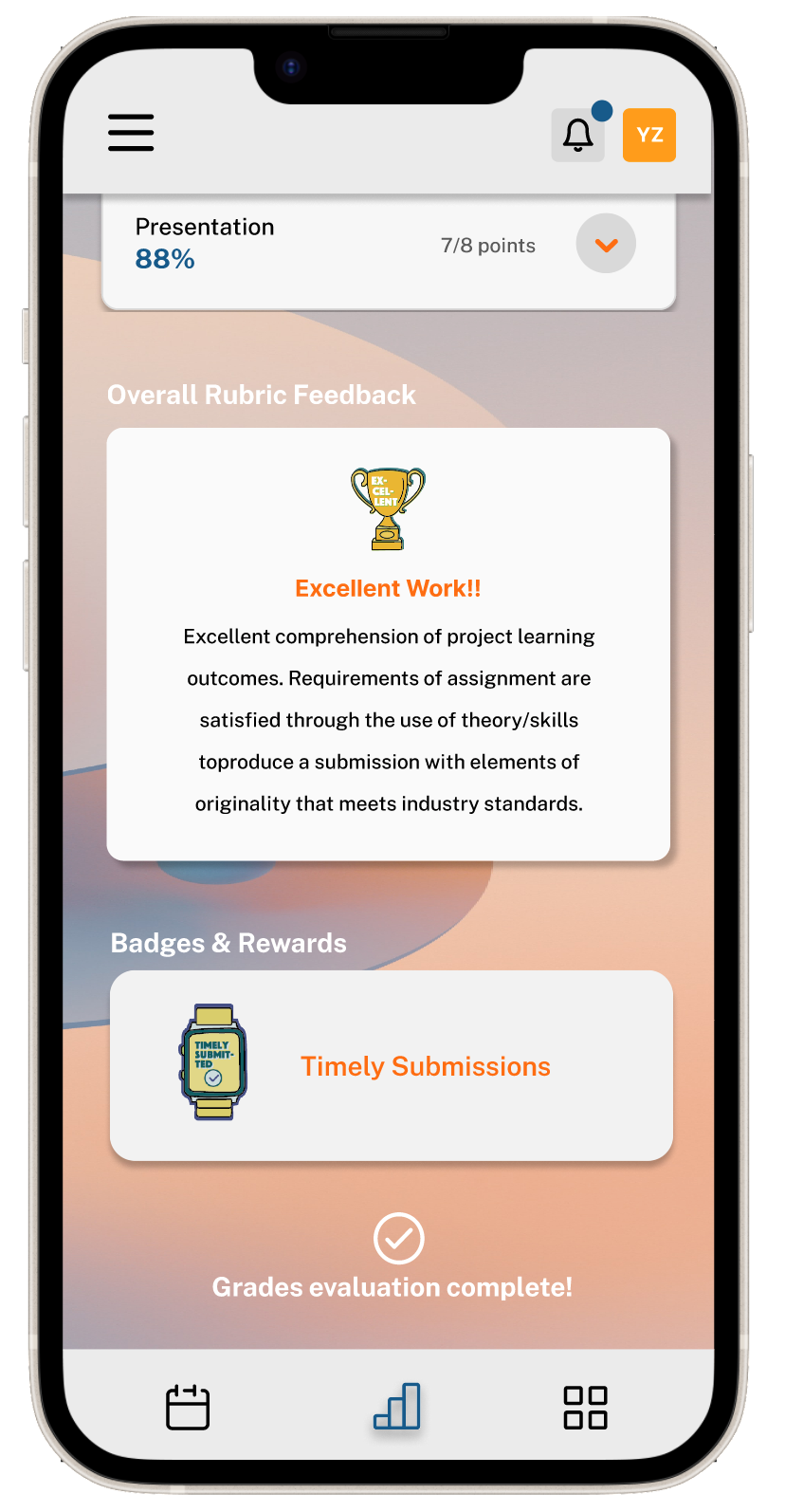
High Fidelity Prototype With UI Improvements
